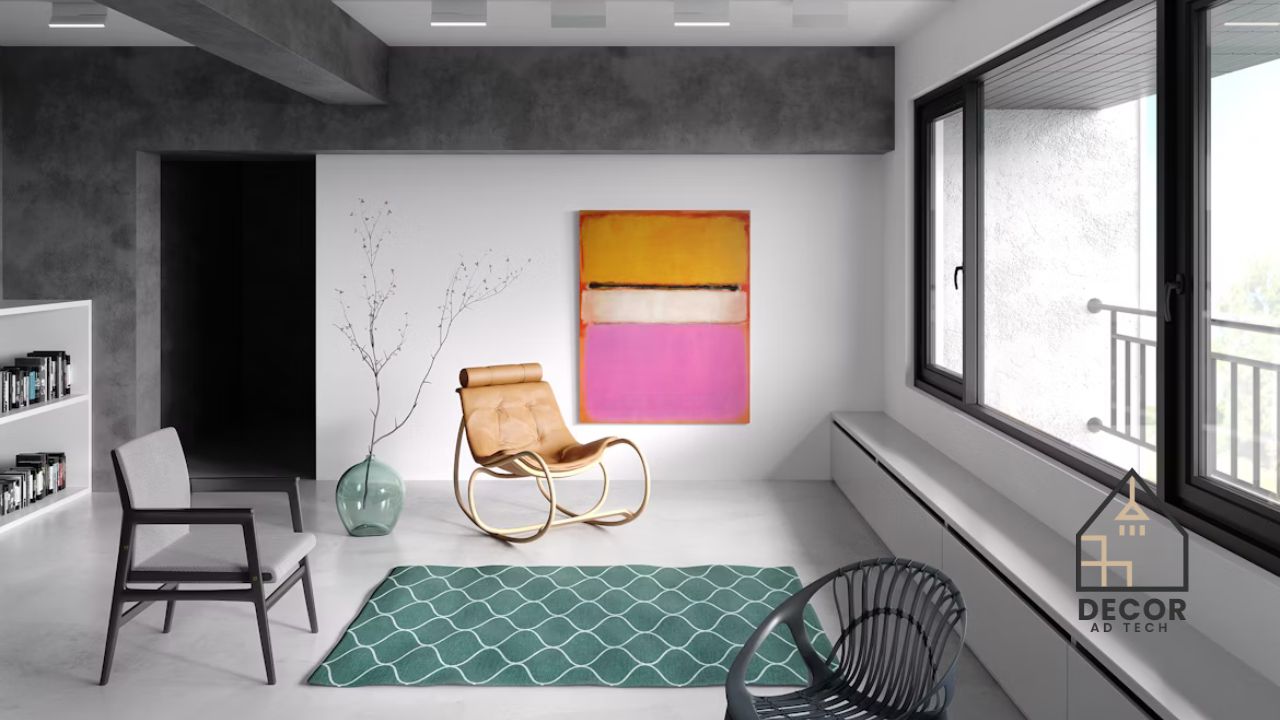Wabi sabi interior design has emerged as a calming antidote to the fast pace of modern life. Rooted in the Japanese philosophy of imperfection and transience, it’s a design principle that values simplicity, natural beauty, and the acceptance of flaws. Whether you’re a minimalist at heart or someone seeking balance in your living spaces, wabi sabi interior design might hold the soothing aesthetic you’ve been looking for.
Wabi Sabi Interior Design Overview
| Aspect | Details |
|---|---|
| Meaning | A Japanese design philosophy that embraces imperfection, transience, and simplicity. |
| Core Elements | Natural materials, muted colors, handmade items, asymmetry, and subtle textures. |
| Popular Rooms | Living rooms, bedrooms, kitchens, and even industrial-style lofts. |
| Purpose | To create tranquil and harmonious living spaces by celebrating authenticity and imperfection. |
| Notable Influence | Often paired with Japandi design, blending Scandinavian minimalism with Japanese simplicity. |
| Ideal For | Minimalists, nature lovers, and those seeking emotional connection in interior spaces. |
What Is Wabi Sabi Interior Design?
At its core, wabi sabi interior design is about appreciating the beauty found in imperfection and simplicity. The Japanese concept dates back centuries, rooted in Zen Buddhism and traditional tea ceremonies. “Wabi” refers to rustic beauty or understated elegance, while “sabi” appreciates the passage of time and the charm of aging.
The Characteristics of Wabi Sabi Design
Wabi sabi interiors are defined by features such as:
- Natural materials like wood, clay, stone, and linen.
- Muted and earthy colors in shades of beige, gray, and brown.
- Organic shapes that feel handmade and authentic.
- Minimalist layouts that avoid unnecessary clutter.
- Textural contrast, such as weathered surfaces juxtaposed with smooth finishes.
- Sustainability, with an emphasis on repurposed or handcrafted items.
This design philosophy stands in sharp contrast to the polished perfection of modern aesthetics, offering warmth and authenticity.
How to Achieve a Minimalist Wabi Sabi Interior Design Style
Achieving a harmonious wabi sabi space doesn’t mean stripping your room bare. Instead, it’s about curating intentional, meaningful elements that invite a sense of calm. Here’s how:
1. Focus on Natural Materials
Decorate with raw, organic materials like:
- Woods (e.g., reclaimed oak or ash).
- Stone countertops or tabletops.
- Handwoven textiles.
- Ceramic vases or bowls with imperfect finishes.
For example, the kitchen is a popular canvas for wabi sabi design. Consider installing rough-hewn wooden shelves or displaying handmade pottery on open kitchen racks.
2. Simplify and Declutter
Wabi sabi and minimalism go hand in hand. Clear out items that don’t spark joy or serve a functional purpose. Instead of filling every corner, leave spaces open for light and air to flow freely.
3. Celebrate Flaws
An old wooden table with a crack running through it or uneven handmade tiles on a backsplash fits perfectly within wabi sabi principles. These imperfections tell a story and add depth to your space.
4. Choose a Muted Color Palette
Stick to soft, neutral tones like:
- Off-whites
- Taupe
- Sand
- Warm grays
Pair these hues with black or dark brown accents for contrast.
5. Layer Textures
Add cozy textures to create visual interest without overwhelming the senses. For example:
- Drape handwoven linen over a weathered armchair.
- Place a shaggy, wool rug in a minimalist wabi sabi living room.
- Add paper lantern shades for diffused lighting.
6. Blend Modern with Rustic Influences
Combine wabi sabi design with modern touches like sleek furniture to create balance. For instance, a concrete coffee table in an industrial loft paired with soft linen throw pillows captures this contrast beautifully.
Real-Life Examples of Wabi Sabi Interior Design
Case Study 1 – A Wabi Sabi Bedroom
One homeowner transformed her bedroom by incorporating uneven plaster walls, a natural wooden headboard, and minimal bedding in earthy tones. The result? A peaceful retreat that immediately calmed her mind. She noted, “I wake up feeling grounded each day.”
Case Study 2 – Japandi Wabi Sabi Design
Another example pairs wabi sabi interiors with Scandinavian minimalism, resulting in Japandi design. This style features furniture with clean lines, like oak dining chairs, paired with Japanese ceramics and a soft sisal rug.
User Rating and Reviews
Design enthusiasts love the emotional connection that wabi sabi spaces bring to their homes. A recent poll on interior design trends showed an average satisfaction rating of 4.8/5 from those who had incorporated wabi sabi elements into their homes.
Here’s what fans had to say:
- “The wabi sabi philosophy resonates with me so much. My living room feels like a sanctuary now.” – Jane D.
- “I never thought I’d love imperfections in my furniture, but it truly adds character to my home.” – David L.
Common Wabi Sabi Rooms
Living Rooms
Many designers transform living rooms with minimalist wabi sabi interior design. Soft lighting, distressed leather couches, and pottery accents can create an inviting space that encourages relaxation.
Bedrooms
Wabi sabi interior design bedrooms often feature untreated wooden beds, linen sheets, and paper lanterns to cultivate a restful atmosphere.
Kitchens
The concept works beautifully in kitchens. Think unpolished wooden cutting boards, open shelving, and ceramic cookware.
Wabi-sabi and minimalism go hand in hand. Clear out items that don’t spark joy or serve a functional purpose. Instead of filling every corner, leave spaces open for light and air to flow freely. For belongings that hold value but don’t align with your pared-down space such as heirlooms, seasonal décor, or stored furniture. You can utilize self storage units Houston. This approach keeps your home serene and uncluttered while preserving meaningful pieces off-site.
Frequently Asked Questions (FAQs)
What is Wabi Sabi Interior Design?
It’s a Japanese design philosophy that values imperfection, simplicity, and transience.
Can Wabi Sabi Work with Modern Interior Design?
Yes! Modern wabi sabi interior design blends rustic imperfections with sleek, modern elements for balanced harmony.
Is Wabi Sabi Expensive?
Not necessarily. Wabi sabi encourages using repurposed, handmade, or natural materials, which often reduces costs compared to luxury decor.
How Do I Decorate with Wabi Sabi in a Small Space?
Focus on decluttering, using multifunctional furniture, and incorporating natural textures like linen curtains or bamboo blinds.
Final Thoughts
Wabi sabi interior design invites us to pause and appreciate the beauty in imperfection and simplicity. By incorporating natural elements, soft colors, and personal touches, you can create a space that feels authentic and rejuvenating. Whether you’re redesigning a bedroom, living room, or kitchen, this philosophy offers freedom to celebrate beauty in all its forms. Why not start incorporating wabi sabi into your home today?
Admin Recommendation
How to Upgrade My Home Decoradtech
Decoradtech Smart Home Ideas by DecoratorAdvice
DecorAdTech Smart Home Ideas by DecoratorAdvice











